4 True Crime Stories Starring Famous Historical Figures
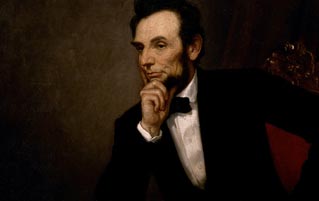
When you think of most historical figures of the last 200 years, you probably imagine them as fragile relics who spent all of their time drinking gin by the fireside and trying not to contract polio. But when they weren't making history, some of these nerdy and eccentric icons of yore got involved in some pretty shady business -- crimes they then had to thwart like utter badasses. For example ...
Sir Arthur Conan Doyle Solved Two Real Mysteries
In 1906, Sir Arthur Conan Doyle received a strange letter from an even stranger man in prison asking him to prove his innocence. This wasn't too surprising for Doyle; this wasn't the first loopy fan who had asked him to solve a mystery, which would be like falling from a tall building and yelling for the writers of Superman to catch you. However, having recently lost his wife, Doyle grabbed the chance not to have to stare lifelessly at his wall all day, and the game was afoot.
Don't Miss
George Edalji had been arrested and convicted of mutilating horses and livestock, as well as sending letters to women threatening to do the same to them, though he kept insisting he was no sort of sexist cow murderer. Upon meeting Edalji, it didn't take Doyle long to get into Sherlock mode. He immediately noticed that Edalji was so shortsighted that he held newspapers an inch away from his face. Too shortsighted, surely, to sneak up on livestock on a darkened moor without tripping and falling on his knife. Doyle suspected that his client had been framed, a quick patsy for the very sloppy, very racist Staffordshire Police. Also, while Edalji was in prison, the attacks were still happening.
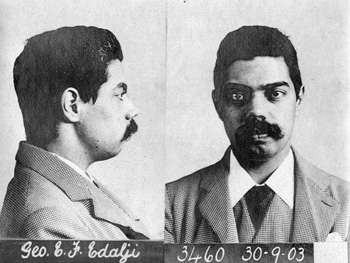
The novelist quickly figured out a much more likely suspect: a local man with previous arrests for violence and a vocal lover of knives (yup, that'll do). Then, as fearlessly as his greatest creation, Doyle started hammering the police chief to reopen the case. However, unlike with his fiction, he couldn't simply write "and justice prevailed" and be done with it. He soon started receiving letters from an anonymous source (it was the police chief) warning him to back off the case, lest he "run the risk of losing kidneys and liver." Fortunately, the government eventually took notice of Edalji's case and, after reviewing the evidence, pardoned him of all crimes.
Having caught the snooping bug, Doyle took another mystery several years later: The Case of the Gilchrist Brooch. Marion Gilchrist was a wealthy, healthy, 82-year-old woman living in Glasgow ... until she was found bludgeoned and robbed of at least half of those descriptors. Among the most notable stolen items was an exquisite diamond brooch, and as luck would have it, a local thief named Oscar Slater was right at that moment trying to sell off a diamond brooch. Coincidence? Yup, it was his girlfriend's. Nevertheless, the police quickly arrested Slater, who was then so hastily sentenced to death that the judge might as well have hung a noose from the courtroom chandelier.
After public outcry managed to reduce Slater's fsentence to life imprisonment doing hard labor, Doyle decided to work tirelessly to find the truth about the Gilchrist murder. He spent months interviewing witnesses, examining evidence, and establishing legal breaches until he had an airtight case proving Slater's innocence ... and then got utterly ignored by the courts.
Then, despite Doyle's conclusive sleuthing being totally swept under the rug, the case got solved anyway when a policeman with a guilty conscience leaked documents showing evidence for Slater's innocence which had been conveniently left out of the trial. With proof of a major conspiracy within the highest court of the land, Doyle rallied the press and politicians, and in 1927, 18 years after he was locked away, Slater was freed. That's the kind of twist even the creator of Sherlock Holmes could appreciate.
Colonel Sanders Was Involved In A Shootout With A Business Rival
Colonel Sanders might not have been a real colonel, but he was no chicken either. He joined the army when he was just 15, then busted his ass doing hard blue-collar labor during the Great Depression. Then there was the time he shot a man over a painted-over sign.
For a while now, the internet has peddled the myth that Sanders once shot and killed a man in cold blood. That's a baldfaced lie, but the truth isn't much less harrowing. The actual firefight came about in the 1920s, while Sanders was in the gas business, the chicken business only being a glint in the not-yet-colonel's eye. As the manager of a Corbin, Kentucky Shell station, Sanders was in a heated rivalry with the manager of the competing Standard Oil station. This manager, a man called Stewart, was a world-class troll who would constantly paint over Sander's road signs, luring customers over to his side of town. It got so bad that Sanders threatened Stewart, saying that if he didn't quit his griefing, he would "blow goddamned head off."
Yet it was Stewart who fired the first shots. One day, as Sanders was being visited by two of Shell's district managers, the trio spotted Stewart brazenly climbing their sign and painting over it. The men raced across the road to stop him, but Stewart had come packing heat and started shooting. One of the district managers, Robert Gibson, was immediately killed. Sanders, acting fast, drew Gibson's gun from his dead body and the two survivors returned fire, wounding Stewart in the shoulder. "Don't shoot, Sanders! You've killed me!" Stewart supposedly yelled out, making him not only a murderer, but a drama queen too.
Soon after, the Nashville police arrested all three men. Sanders and manager H.D. Shelburne got off on self-defense, while Stewart received an 18-year prison sentence for murdering a man over a stupid sign. But to Stewart's surprise, he didn't actually have to spend that much time in jail, as he was brutally killed by a sheriff's deputy only two years later. The deputy didn't even get arrested for the killing, and soon rumors started flying that the Nashville police had been paid off by Gibson's family, who had put a hit out on Stewart. With that level of gunplay and revenge killings, we understand why Sanders preferred an easygoing title like "colonel" for his family restaurant; "Shell Manager Sanders" would've been way too intimidating.
Abraham Lincoln Lawyered The Case Of A Resurrected Dead Man
Before he took up high office, Abraham Lincoln was a lawyer working out of Springfield, Illinois with his partner William Herndon. There he worked on over 5,000 cases big and small, and loved the law so much that he promised his partner he'd return to the firm after his presidency "as if nothing had ever happened." Just what we need, Lincoln's death being even more tragic.
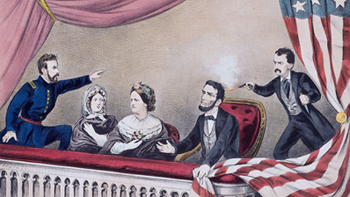
But out of the many cases Lincoln the hotshot lawyer took, none was more mysterious than a particularly bizarre murder. Or was it a robbery? Or was it necromancy? The case concerned William Trailor, a man accused of murdering a local recluse named Fisher -- just "Fisher," that's the level of hermitship we're talking about here. At first glance, it was an open and shut case. The prosecution had several witnesses who saw William and his brothers lure Fisher into a local copse and exit without him. William also boasted that he knew for certain Fisher was dead, and that this stranger had for some reason left him a bunch of gold coins in his will. There were also clear signs of struggle in the thicket the men walked into.
The only thing that was missing was a body.
Despite Lincoln's best efforts, he could not convince the judge that it was wrong to convict anyone of murdering Fisher when no one could confirm he was dead. But then, before William could be condemned to the gallows, Fisher himself threw open the courtroom doors and demanded to know what in tarnation was going on. As it turned out, he'd been convalescing at the home of a local doctor for the last several weeks, and was perturbed to hear that he'd been murdered. The case dismantled, William and his brothers were set free, while the recluse presumably spent the next few weeks chasing down whoever was in his will to get all his stuff back.
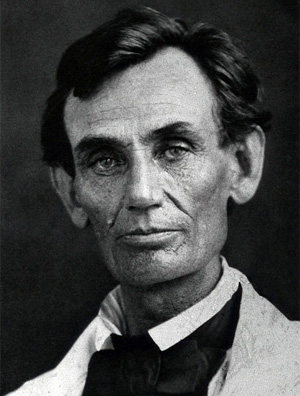
For Lincoln, however, Fisher's sudden reappearance didn't do anything but raise more questions. When writing about the Trailor trial years later, he noted a whole series of problems that were never resolved. How did the witnesses miss Fisher leaving the woods? Why did the Trailor boys and the recluse all refuse to talk about what happened there? Didn't anyone find it suspicious that Trailor died within the year after Fisher reappeared? We're not entirely sure how it all adds up, but neither did star attorney Abraham Lincoln, so that makes us feel a lot less stupid.
Queen Victoria Cheerfully Ran A Sting On Her Own Assassin
Though only 5'0", Queen Victoria has always been one of the most imposing figures in European history. Not only was she a badass queen, creating daring reforms that brought the British Empire back from the brink of financial ruin, but she was also a badass person, giving birth to nine healthy children in a time when going into labor was as dangerous as playing Russian roulette. So it should come as little surprise that when a little man with a little gun tried to kill this unkillable queen, she made sure he rued the day.
As Victoria and Albert were taking an open carriage ride home from church in 1842, a "little, swarthy, ill-looking rascal" named John Francis attempted to shoot her, upset about the distribution of wealth between monarchs and not-monarchs. Fortunately, Francis' pistol had become a bit gun-shy in front of the queen and failed to fire, after which he fled the scene and disappeared. But after the failed assassination attempt, rather than tripling security and hiding in Buckingham Palace, the queen adjusted her royal balls and swore everyone to secrecy about the attack. She was described as "quite calm" about the whole affair, which might as well be the new dictionary definition of "regal."
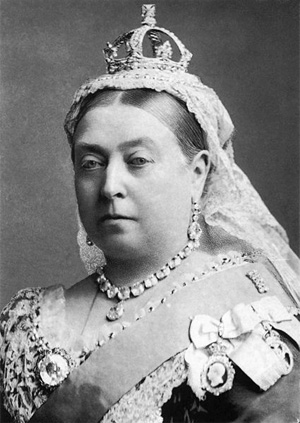
But Queen Vic's security feared that Francis was zealous enough to try again. "Why should she be such an expense to the nation?" he was later heard saying, as if her continued existence was an ongoing budgetary issue he had to resolve. So, knowing how badass his queen was, her prime minister suggested that she go on another open-carriage ride on the very same route the very next day to draw out the assassin. Victoria was totally onboard with this plan. Of course, Mr. Francis fell for the trap and tried to shoot the queen again, but this time found himself mauled by plainclothes coppers. When they disarmed him, they discovered that his gun wasn't even loaded. So at least his inability to buy any ammo did highlight the economic inequality he was fighting against.
What Francis also accomplished was landing himself in jail. Of course, the sentence for high treason is typically death, but Victoria herself commuted his sentence to life in exile on a penal colony 800 miles east of Australia. That's right, she was so unimpressed by Francis that not only did she give him another shot after the first one failed, but she also didn't even count his pitiful attacks as proper assassination attempts. That has to hurt.
Marina and Adam spread the good word on Twitter. Adam also has a Facebook page and a newsletter about creepy history that you should totally subscribe to.
Support Cracked's journalism with a visit to our Contribution Page. Please and thank you.
For more, check out 6 Famous People With Shocking Criminal Backgrounds and 5 Famous People With Mind-Blowing Connections To Evil Crimes.
The REAL crime is that you aren't following us on Facebook.